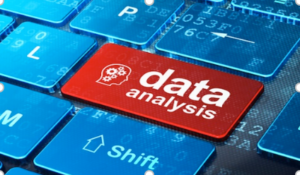 Typically, when people analyze data, they begin the process of interpreting all of the information gathered, which can become quite overwhelming and cumbersome without another set of eyes or hands. This process is normally done by organizing or querying data in the form of a table, bar chart, line graph, or other representation. Although, that is merely the foundation and beginning of getting to the problem. The next required step is putting immediate action and responsibility behind the figures. Data by itself can be very useful, we actually don t need more of it, it becomes invaluable if nothing is done to improve the issue or apply methods to the problems discovered. The main important idea that people should understand and takeaway from this topic is that data itself cannot solve every problem nor add significant value singlehandedly.
Typically, when people analyze data, they begin the process of interpreting all of the information gathered, which can become quite overwhelming and cumbersome without another set of eyes or hands. This process is normally done by organizing or querying data in the form of a table, bar chart, line graph, or other representation. Although, that is merely the foundation and beginning of getting to the problem. The next required step is putting immediate action and responsibility behind the figures. Data by itself can be very useful, we actually don t need more of it, it becomes invaluable if nothing is done to improve the issue or apply methods to the problems discovered. The main important idea that people should understand and takeaway from this topic is that data itself cannot solve every problem nor add significant value singlehandedly.
The issues of big data extend largely from manufacturing, pharmaceutical, financial services, energy and healthcare. Sadly, there are oceans of data floating around with little to no business impact. Based on these outcomes, an Information Value Index (IVI) survey was given and led to over 1,650 businesses to measure the worth of data. The IVI survey that was conducted gave businesses a score ranging from 0 to 100, with 100 being how well a company can use the information and how much value they can derive from the data. For all mid-market companies and enterprise businesses surveyed, they obtained a score just a little over 50 (IDG Communications, 2015). Therefore, there is a future need to drive more benefits behind collecting the right data and obtaining a much higher value index, driven by action and people.
This is one of the most treasured concepts of REVEAL. This advanced technology automatically mines data and alerts appropriate members before a disruption occurs to manufacturing throughput. There are much more cost benefits of proactive data analysis than reactive data analysis. As soon as the data starts to trend towards a failure, the individual is alerted to act immediately.
Evidence of information becomes fruitless if it cannot recognize and measure:
- What exactly is hindering the business and output, are you focused on the right piece of data?
- Why did this occur, are these issues new or systemic?
- How significant is the issue? Set a priority and a sense of urgency behind the data analyzed.
- Who needs to know? How is this information being escalated and resolved into a corrective action?
Other instrumental features behind the REVEAL software is that it allows access to easier chart readings and the convenience of monitoring the variability of data throughout the day. This enables quicker communication and stronger organizational alignment amongst employees. These tools will drive tremendous value from data that will be received in real-time. With this type of tool at hand, there is no need for advanced knowledge of statistics. Achieving value and turning it into action is now possible within a matter of seconds! This type of proactive control will start to make data feel real, stress free and improve throughput exponentially.
Citations
White, Sarah (2015). Study reveals that most companies are failing at big data. IDG Communications, Inc.https://www.cio.com/article/3003538/study-reveals-that-most-companies-are-failing-at-big-data.html
